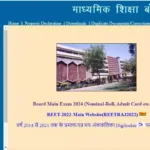Jute, the golden fibre of India, has been a mainstay of our textile industry for centuries. Known for its eco-friendly nature, strength, and versatility, jute has the potential to be a game-changer in a world increasingly concerned about sustainability. However, the industry has faced challenges in recent years. To address these issues and revitalize the jute sector, the National Jute Board (NJB) introduced the Jute Resource-cum-Production Centre (JRCPC) scheme. Let’s delve deeper and understand how JRCPCs are breathing new life into jute production in India.
Empowering Local Communities: The Core of JRCPCs
JRCPCs are not just production centres; they are hubs for empowering local communities, particularly artisans, women’s self-help groups (SHGs), and aspiring entrepreneurs. These centres are set up across the country in collaboration with qualified agencies with expertise in skill development and training. Here’s how JRCPCs empower local communities:
- Skill Development and Training: JRCPCs provide comprehensive training programs on jute processing, product design, and value addition. This equips individuals with the necessary skills to create high-quality, diversified jute products (JDPs) that cater to contemporary markets.
- Market Linkage and Support: JRCPCs don’t just stop at skilling. They bridge the gap between producers and markets by providing crucial support in marketing and selling JDPs. This could involve connecting artisans with potential buyers, facilitating participation in trade fairs, or even setting up retail outlets.
- Financial Assistance: The JRCPC scheme offers financial assistance to collaborating agencies to establish the centres and for beneficiaries to procure raw materials and equipment. This financial backing removes a significant barrier for those who might lack the initial capital to venture into jute production.
From Raw Jute to Trendy Products: Diversifying the Jute Industry
Gone are the days when jute was synonymous with just burlap sacks. JRCPCs are at the forefront of promoting product diversification in the jute sector. The centres introduce participants to innovative techniques and designs to create a wide range of trendy and functional JDPs. Here are some examples:
- Home Decor: JDPs encompass a delightful range of home decor items, including stylish floor coverings, rugs, table runners, and even trendy wall hangings. Jute’s natural texture and earthy tones add a touch of rustic elegance to any living space.
- Fashion Accessories: JRCPC training programs equip artisans with the skills to create beautiful and eco-conscious fashion accessories like jute bags, wallets, belts, and even footwear. These products cater to a growing market segment that values sustainability and ethical fashion.
- Stationery and Gifting: JRCPCs promote the creation of eco-friendly stationery items like jute notebooks, folders, and pen holders. Additionally, jute gift bags, coasters, and decorative items are gaining popularity, offering sustainable alternatives to traditional options.
This product diversification not only expands the market for jute but also caters to a growing eco-conscious consumer base, ensuring the long-term viability of the industry.
JRCPCs: A Sustainable Future for Jute
JRCPCs play a crucial role in promoting the sustainable aspect of jute. Unlike synthetic fibres, jute is a natural, biodegradable, and renewable resource. By promoting jute production, JRCPCs contribute to a more sustainable future for the textile industry. Here’s how:
- Reduces Environmental Impact: Jute cultivation requires minimal water and pesticides compared to other fibres. Additionally, jute products decompose naturally, unlike synthetic materials that contribute to landfill waste.
- Supports Local Livelihoods: Jute production is a labour-intensive industry, providing employment opportunities in rural areas. JRCPCs empower local communities and contribute to rural development.
- Promotes Green Living: By creating a market for sustainable JDPs, JRCPCs encourage consumers to make eco-conscious choices, promoting a shift towards a more sustainable lifestyle.
JRCPC’s focus on skill development, product diversification, and sustainability paves the way for a brighter future for the jute industry in India. These centres empower local communities, create sustainable products, and ensure that the golden fibre continues to shine for generations to come.




